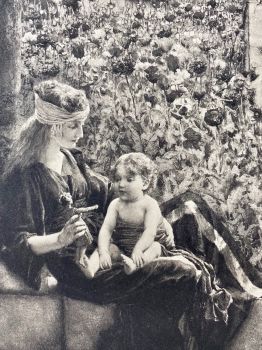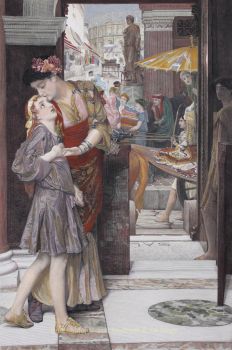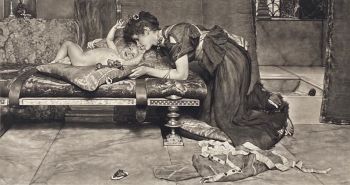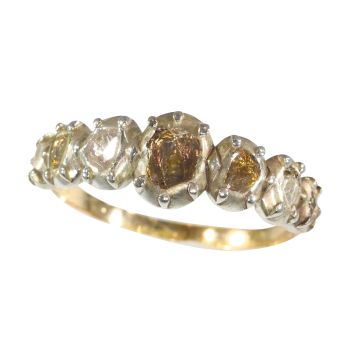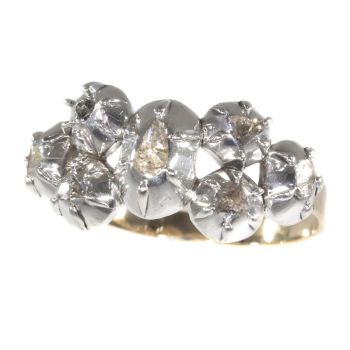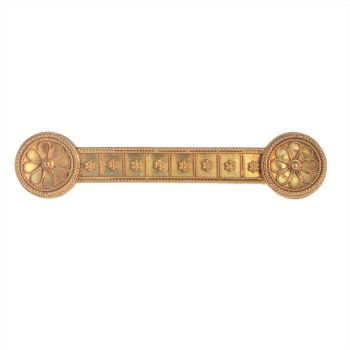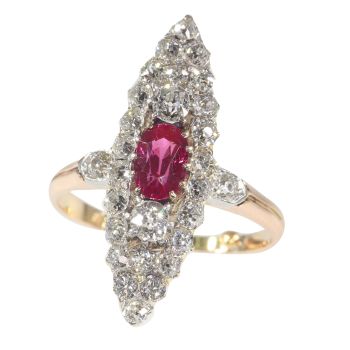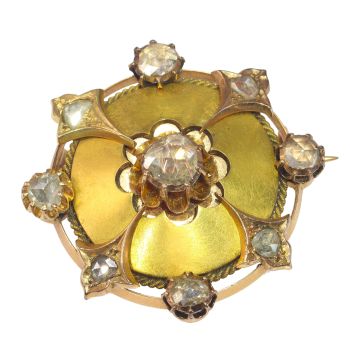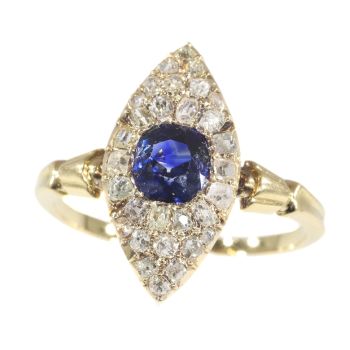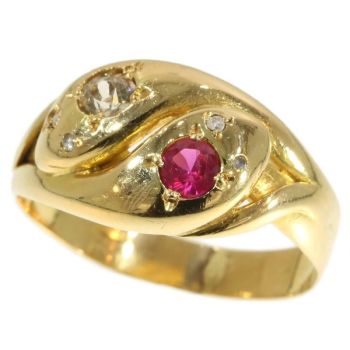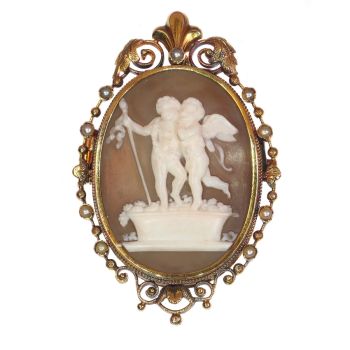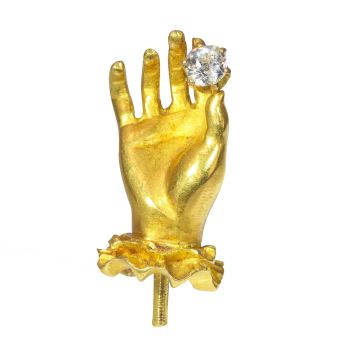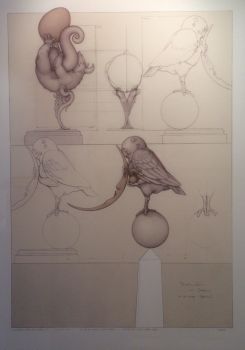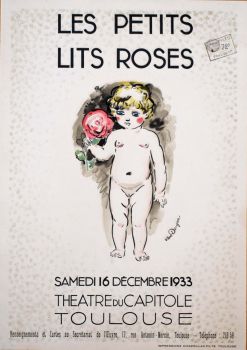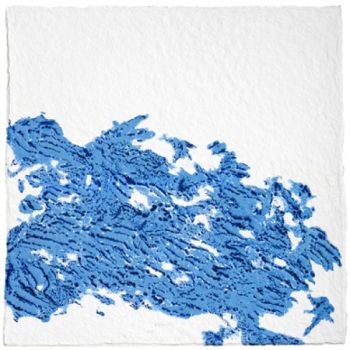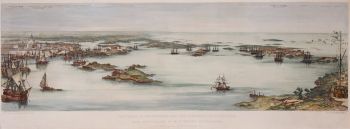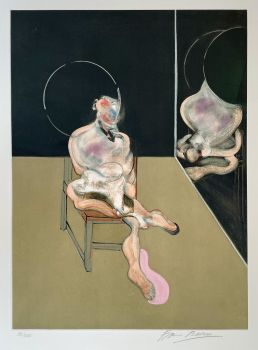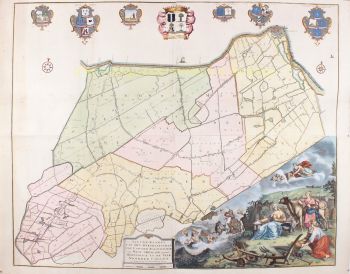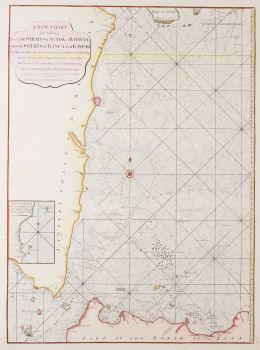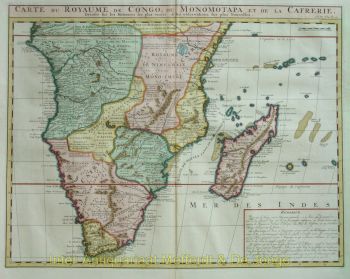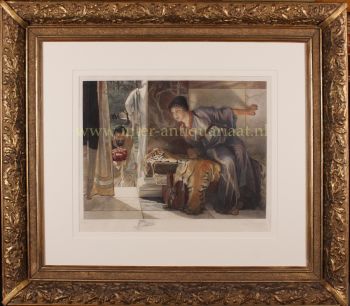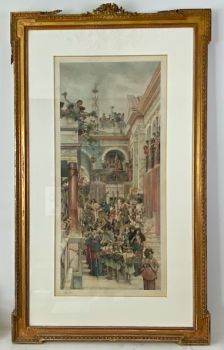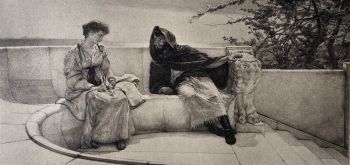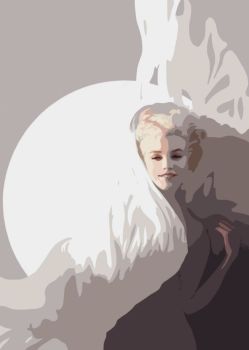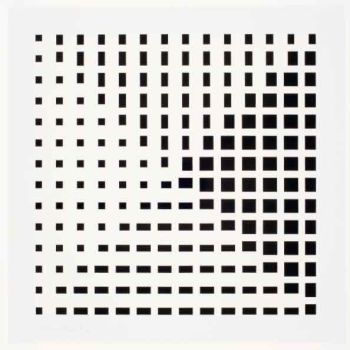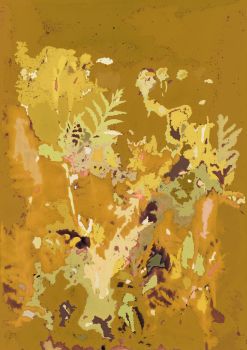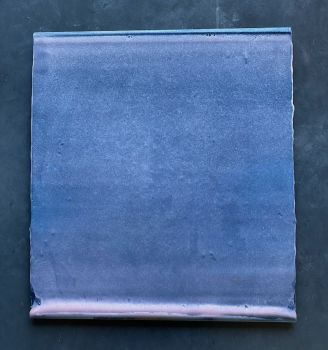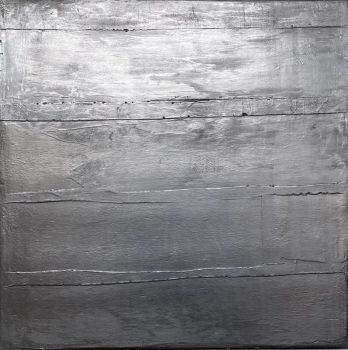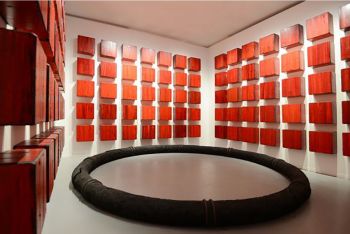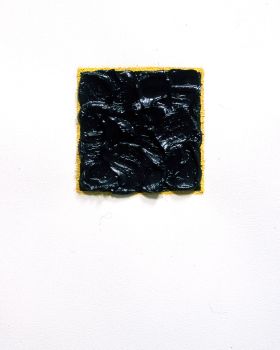"The finding of Moses" (original handcoloured engraving) 1905
Lawrence Alma-Tadema
HeliographyFine Art paper printPhoto lithoPhotographic print
48 ⨯ 74 cm
ConditionVery good
Price on request
Gallerease Selected
- About the artwork
Original heliogravure/ photo print) made in 1905 by the Berlin Photographic Company after the 1904 painting by Sir Lawrence Alma-Tadema, coloured by hand over time. Dim. 48 x 74.8 cm. In original frame. In late 1902, Alma-Tadema traveled to Egypt (under British protectorate at the time) as a guest of the engineer Sir John Aird to attend the inauguration of the Aswan Dam, which Aird's company had just built. Aird wanted to have an Egyptian painting made by Alma-Tadema for the occasion. The subject became Exodus II: 6, indicating an important event on the Nile: “And the daughter of Pharaoh went down to wash in the river; and her ladies walked by the side of the river; so she saw that boy; and she was moved with compassion for it. "It became one of Alma-Tadema's most beautiful works. We see a royal procession along the Nile. The entourage of the daughter of the Pharaoh walks past lavender and delphinium, she looks lovingly at Moses. To the left a red granite statue of a seated pharaoh," with on the pedestal in hieroglyphs "Beloved by Ra, the king of Upper and Lower Egypt." Alma-Tadema worked on the canvas for two years, until his wife seems to realize that the boy was now two years old and did not need to be anymore.
- About the artist
Lawrence Alma-Tadema is one of the most highly renowned romantic artists of late 19th century Britain. He was born in the Netherlands as Laurens Tadema, to the family of the town notary. Later, as he tried to make his niche in the art world, he changed the spelling of his first name to the more English “Lawrence,” and included his middle name “Alma” as part of his surname, so he would be listed among the “A’s” in exhibition catalogues.
As a child, it was decided that Alma-Tadema would pursue the career of a lawyer, but he suffered a mental and physical breakdown when he was fifteen years old. He was diagnosed as consumptive, given a short time to live, and thus free to pursue a life of leisure and pleasure. Once left to his own devices, he decided to study art, as his mother had paid for art lessons in his earlier childhood and it was one of his interests. He regained his health and studied at the Royal Academy of Antwerp in 1852, where he won several respected awards. His first major work was exhibited in 1858, and it won much critical praise, and creating a sensation in the art world. By 1862, he set own in his own studio to pursue his individual career in art.
In 1869, Alma-Tadema lost his wife of six years to smallpox. Disconsolate and depressed, he ceased painting and his health was failing. Under the advice of his physician, he traveled to England for a medical diagnosis, where he was invited to the house of a fellow painter, Ford Madox Brown. It was here that he laid eyes on Laura Theresa Epps, who was 17 at the time, and fell madly in love with her. Alma-Tadema took advantage of the outbreak of the Franco-Prussian war to relocate to England, where he wasted no time contacting Laura and contracting her in private art lessons. It was during one of these lessons that Alma-Tadema proposed, and they were married shortly thereafter. Alma-Tadema was 34 years old, and the bride 18.
Alma-Tadema spent the next part of his life traveling through Europe, and enjoying the continued success of his paintings. As a man, his bursts of bad temper were eased by his extroverted, warm personality and sense of mischief. A perfectionist and obsessive worker, he also innovated a new numbering technique, which made it difficult for forgers to pass off unoriginal works. In his later years, although his artistic output decreased somewhat, he enjoyed continued success, eventually becoming one of the wealthiest painters of the 19th century. He was knighted in England in 1899.
In 1912, Alma-Tadema traveled to Germany to undergo treatment for stomach ulcer, and died in Germany at the age of 76. After his death, his work was mostly ignored. Due to the drastic changes taking place in art, Alma-Tadema’s artistic genius would not come into the public eye again until the 1960s. His meticulous work had since been used as source material for dozens of Hollywood movies.
Are you interested in buying this artwork?
Artwork details
Related artworks
Lawrence Alma-Tadema
"Caracalla and Geta: Bear Fight in The Coliseum, AD 203" 1907
Prijs op aanvraagGallerease Selected
 Gecureerd door
Gecureerd doorDanny Bree
1 - 4 / 12Onbekende Kunstenaar
18e-eeuwse diamanten armband met 2000 jaar oude Romeinse intaglio's1790
€ 23.000Adin Fine Antique Jewellery
 Gecureerd door
Gecureerd doorDanny Bree
1 - 4 / 24- 1 - 4 / 24
Lawrence Alma-Tadema
"Caracalla and Geta: Bear Fight in The Coliseum, AD 203" 1907
Prijs op aanvraagGallerease Selected
 Gecureerd door
Gecureerd doorDanny Bree
1 - 4 / 24Lawrence Alma-Tadema
"Caracalla and Geta: Bear Fight in The Coliseum, AD 203" 1907
Prijs op aanvraagGallerease Selected
 Gecureerd door
Gecureerd doorDanny Bree
1 - 4 / 24- 1 - 4 / 12




